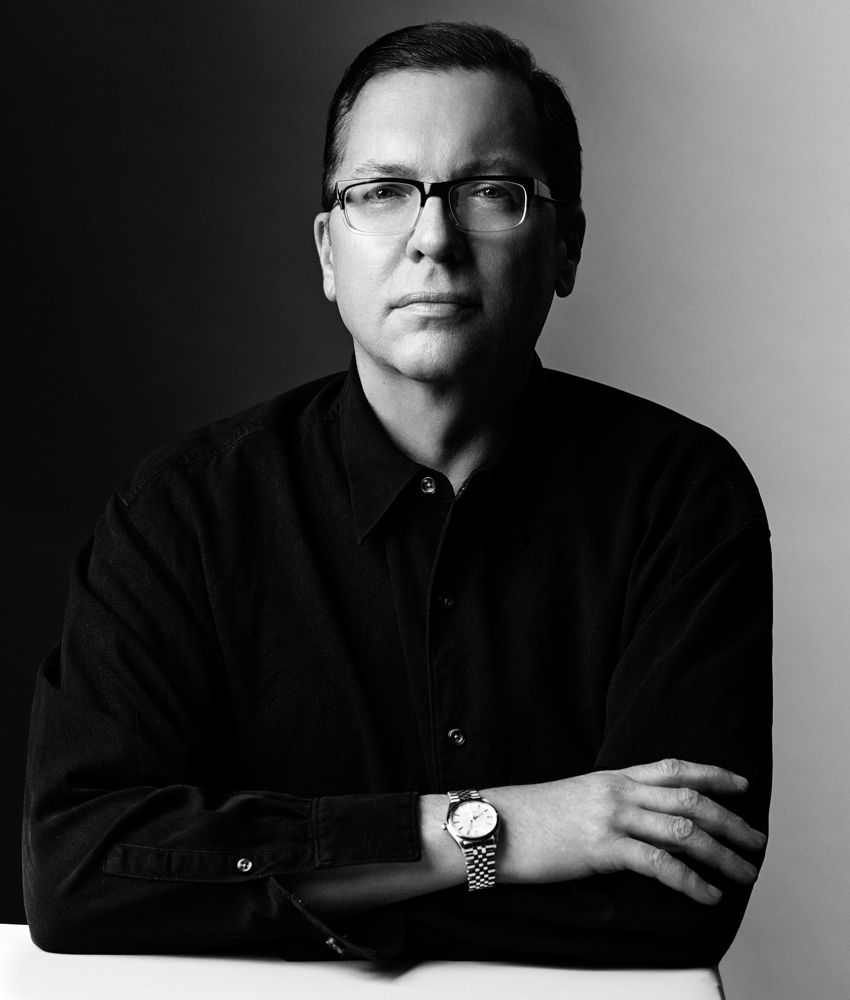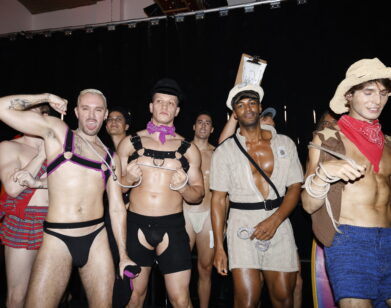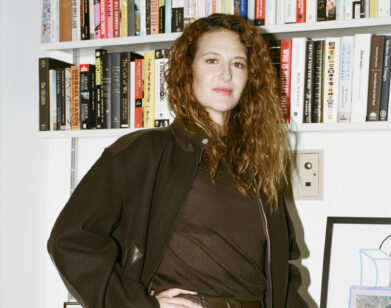JOHN GNERRE

With girls, when they’re working, the magic words are please and thank you. John Gnerre
DAVID COLMAN: How did you get your start?
JOHN GNERRE: After I finished school, my first big opportunity was when Candy Pratts Price hired me to do windows for her at Bloomingdale’s. I owe a lot to her—her position of being this Puerto Rican girl up against all these suits… She taught me when you believe in something and feeling strongly about it, you have to keep pushing. After she left, the fashion director there, Kal Ruttenstein, moved me into the advertising department. I worked under this guy John Jay, and we were working with people like Mario Testino and Herb Ritts. That’s when Bloomingdale’s was the only unique store in the city and bringing designers over from Europe for the first time. From there, I had the chance to flip from being the client to working at an agency.
COLMAN: You started working with Paul Rowland.
GNERRE: At the very beginning, he was working at the agency Men. But I knew about models from when I worked in Bloomingdale’s. I would go on the photo shoots—I was the stylist. I booked models like Christy Turlington when she was a little kid. A friend of mine said, “It’s not about men, it’s about women. It’s the only profession where a woman makes more than a man. Guys are a waste of time.” So Nadia Shahrik, who ran the agency Men, said, “Okay, take that corner,” of this loft in Chelsea. We took a door and put it on sawhorses and Women started. The loft was in Chelsea across from a fire station, and it was really cool because if we looked out the window, we could see into the firemen’s locker room. We’d check out the guys changing. [laughs] So that’s how Women began.
COLMAN: Who were your first girls?
GNERRE: Robyn Mackintosh was one of the first. She was on the very first cover of Italian Vogue that Steven Meisel did. It happened so fast. But I’ve just been blessed with things coming my way. When things feel good deep down, I take advantage of it.
COLMAN: Is that how you chose the girls you brought into the agency—by a gut instinct?
GNERRE: I’ve worked with a lot of people who have come and gone at Women, and some just didn’t fit into the mindset of what it’s all about. It’s not about an equation or a formula; it’s just a feeling. You can’t describe what it really is. Like, when a girl walks in the room and you’re just drawn to her. You don’t know her and she doesn’t say anything, but it’s just, “Wow, who is that?” I remember going to Paris and seeing Carmen Kass coming out of this agency on the street. I said, “Oh my god, who’s that?” and ran up to her. Carmen has been one of the most loyal, connected women we’ve ever represented.
COLMAN: Who were some other models that you consider part of that agency profile?
GNERRE: Iselin Steiro, Isabeli Fontana. And there are women who we started out who have gone on to other things. There were days of getting the rush of dealing with Stella Tennant or from our days of being with Men and representing Mario Sorrenti and pumping him up to take pictures. His photography started and he went to London and came back to New York to visit his family. He was like, “I want you to meet my girlfriend. She doesn’t do much in London. Her agency is sending her to L.A., but I want you guys to meet her.” It was Kate. It was like, “Oh my god.” And there was that rush and all that fun of being with her up until she had her kid. Even working with Naomi Campbell was a rush. I worked with her back at my Bloomingdale’s days, and I crossed over to being her agent at Women.
COLMAN: It sounds like, for you, socializing with the women you represent is important.
GNERRE: There’s a connection, we get together. Back then, it was wilder because you’re partying with the girls, socializing, hanging out. But then the gap in years was very slight. Now I’m older and with the new girls, I’m suddenly their parents’ age—maybe I’m their grandparents’ age. And what really touches me is the girls who are a little older and having kids of their own now, like our girl Shannan Click just had a baby, and Natasha Poly just had a baby. And we’ve represented Isabeli since she was a kid and she’s just turning 30; she has two boys now. There is definitely a personal side to it.
COLMAN: How has that industry changed?
GNERRE: It hasn’t changed at all. It’s all the same. Of course, the speed of communication is faster. You’ve got to be a lot quicker. But all the sides of this business, from agencies to the girls and all the states of competition, it’s been the same from the days of John Casablancas—god bless him—and with Ford and Wilhelmina and Zoli. More agencies, more models. But the whole dynamic of it is the same old story. It doesn’t begin with us, it’s not ending with us. That’s why you’ve got to know your references.
For more model agents, click here.






